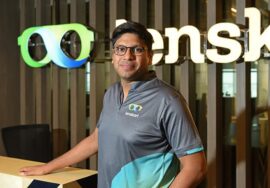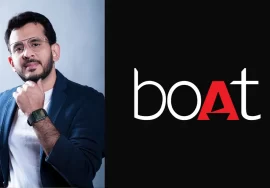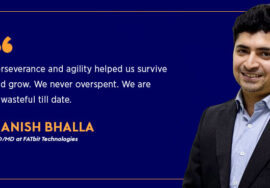Tomer Aharon – Co-Founder Poptin Interview
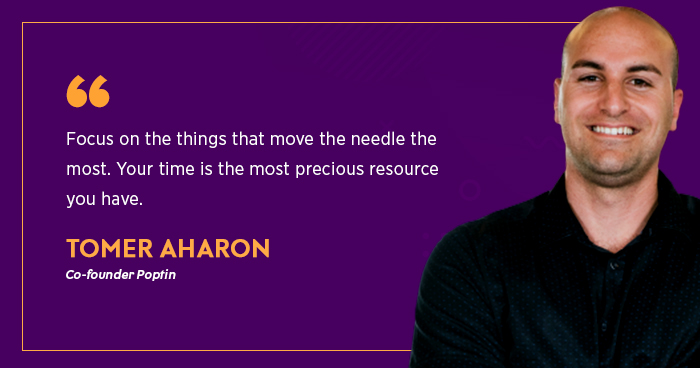
Success is where preparation and opportunity meet – Bobby Unser
The quote sets the tone for this interview.
Today, we are interviewing Tomer Aharon, cofounder of Poptin. Almost seven years ago, Tomer didn’t know that he will transition from a service-based company to a product-based company. But things changed when one of his experiments became an instant success! After that, there was no turning back. Today, Poptin is a highly successful SaaS product with a dedicated community.
But… before we start revealing more of his secrets, let’s start the interview.
Over to Tomer.
Cloudways: You founded a SaaS company ‘Poptin’ and we have heard a lot of great things about it. How did you get this idea? What problems did you see in the market? How did the whole idea of entrepreneurship actually begin?
Tomer: Thank you! We ran an SEO agency for seven years beforewe started Poptin.
It all started when one of our clients had great results with almost 300% more visitors per month. However, the customer told us that this didn’t reflect the number of leads he got.
So we came up with an idea to build an exit-intent popup for the customer. It increased the leads dramatically. We added the same solution to a few more clients and it worked well for all of them.
We realized we should build a platform out of it, and with the agency revenue, we hired a full-time developer for dedicated work on the tool. We had a few more products before Poptin but they didn’t scale as much as we wanted.
So, Poptin was the first global product we had success with. We acquired Prospero last year and developed Premio and Tray. Now all these tools are growing rapidly.
Cloudways: Interesting journey… how did you make the switch from a service-based business to a product? Was it difficult?
Tomer: The digital agency is still operational, but it is not our main focus. We reduced the number of clients we worked with (80-90 at the time) and retained only those who don’t require a lot of attention and customer support.
We have around 30 clients there that are very happy with the results they get and have been with us for a couple of years.
We hired a full-time developer who built the first version of Poptin. At that time, we didn’t take many website building projects so that our in-house designer could also focus on Poptin. Within eight months, we launched Poptin locally in Israel, and four months later on July 2017, we launched the product on a global level through Product Hunt.
By that time, our team had grown from eight marketers to 10 employees – most of them, developers.
We always wanted to create digital products. The agency was just a phase and a way to get there. Without the agency experience, we wouldn’t know how to market and advertise ourselves in the best possible way. We wouldn’t be able to discover the pain of the clients and the digital agencies, and we wouldn’t have money to start Poptin by our own means (without investors, loans etc).
Even though we are busier, we are happier, feel more accomplished and free. We can focus on vision, features and building great products. Sadly, as an agency, 70 percent of the work is just making the client happy and working according to their schedule, and less focus on the professional aspect.
Cloudways: Being an entrepreneur is a serious challenge. How do you tackle this and what are your five tips for aspiring entrepreneurs?
Tomer: Being a business owner and especially an entrepreneur is a challenge and you most likely experience hard times. Luckily, I have my best friend as my business partner. So my first tip is to have a partner that you can trust with your eyes closed. I can’t imagine going through what we have been through by myself.
The second tip is to never stop learning. Whether it is books, podcasts, blogs, experiments or by talking to people, you always need to turn on your ‘learning mode’. The more you know and the more experience you have, the faster you can execute.
This brings me to the third tip. Execution is one of the most important things in entrepreneurship. We’ve seen a lot of entrepreneurs that work on their product for a few years and never launch, or companies that take a very long time to launch a very small feature that their customers request.
Managing your time smartly is the key to get things done. Learning, executing and being flexible will be way harder after you have kids, so use your free time now to grow and build your infrastructure, because later you’ll just get busier. Write down what you want to get done each day, and track your process and accomplishments (we do it with a notebook, Trello and a dedicated Slack channel).
The last tip is focusing on the things that move the needle the most. Your time is the most precious resource you have. If you work on the features that your users don’t care about, or write an eBook that will bring you eight more people to the top of your marketing funnel, you won’t be able to scale.
Cloudways: You managed to acquire two SaaS companies in a short time. Was it a strategic move or you were just looking to increase your business portfolio?
Tomer: Both 🙂
We acquired Prospero, a business proposal software (SaaS), and a few WordPress SaaS plugins under Premio.io. We are planning to acquire another SaaS entity by the end of the year. All our products are built for website owners, freelancers in the digital space and digital agencies. We have customers, usually agencies, that use and pay for all of our products. We also just launched Tray, a Chrome extension that helps you be more productive by using canned responses.
Cloudways: Some people think that the SaaS market is getting saturated. What are your thoughts on this? In your opinion, what is the future of the SaaS industry?
Tomer: I think you will see even bigger brands getting into SaaS. You can already see Nike, with a subscription model of shoes for kids; Disney, with a video streaming subscription, online clothing subscriptions and more.
As Chris Makkreel, Head of Technology at Salesforce said, “The future of SaaS will be defined by doing more with less”. We will see more products and solutions for non-coders. I believe SaaS will keep replacing more traditional business models and it will be a major player in providing solutions. The products that can help users learn about user behavior and community will take the lead.
Cloudways: What are the major challenges you face while managing SaaS businesses and how do you tackle them?
Tomer: Accounting – We are fully bootstrapped, and for using Stripe we needed to open an American company. We needed to learn a lot about the process, taxes, reports, etc. We had a great consultant from PWC that helped us with everything, and now we work with a local accounting firm and an American accountant as well.
Customer support – This is one of the most time-consuming things you will have to face while managing SaaS. You need to understand that customer support (or customer success) is not a task you need to clear off your desk. It is the best way of creating relationships with your customers, get more ambassadors, online reviews, feature requests and critical feedback that help you build a better product. We still answer email and support tickets ourselves and I think every founder should do it for the first year or two.
How to Bootstrap Your Business From the Ground Up
Cloudways: What are your two favorite customer acquisition channels? And why?
Tomer: SEO – which in 2019 can’t be separated from content marketing. As an SEO agency, it was easy for us to start with SEO. A few months before launching, we started to write content on various topics about digital marketing. It also helped build awareness and trustworthiness around our name. As time passed, we got more websites and social profiles linking and mentioning our blog posts and our domain authority went up. That helped us to get higher ranks faster with almost any piece of content we published.
Integrations and marketplaces – It is one thing to build an integration with other software, and a totally different thing to actually get users from it. You need to keep promoting it, do on-page optimization (if you have a listing page), build relationships with the people on the other side, and collect reviews and good feedback.
Cloudways: You and your team work on five projects (3 SaaS, 1 digital agency and a small real estate private company). How do you manage customer support and marketing for such a diverse audience? What tools do you use to take customer feedback on the product and how do you use it to improve the product?
Tomer: As I mentioned above, customer support is a big challenge. But it is crucial for your company’s growth. Because, we dilute the “noisy” customers out of the agency, the support they get is limited. The real estate company also doesn’t require too much attention, just when renters are replaced.
Prospero has a clear interface and really easy-to-use, even though there are a lot of users, the volume of support tickets is low.
The most time-consuming in terms of support is Poptin and Premio. These products need to be integrated with the client’s websites, and that is not a stand-alone solution like Prospero.
Since we are fully bootstrapped, it is important to provide customer service ourselves and collect as many feature requests and bug reports as possible. So that we can build the vision and the roadmap in the right way. Soon, we will probably add another remote customer support.
We use Crisp chat as the live chat feature inside the Poptin dashboard, Support Hero as our knowledge base, Intercom for Prospero, and Chaty for Premio.
Cloudways: Pricing is an important decision in any SaaS business. What three things would you recommend to a SaaS business owner to think before setting a price? What are some unique pricing models you have seen in the industry?
Tomer: Three things I would recommend to a SaaS business owner to think before setting a price are:
Simple – Keep it simple. Don’t make 10+ plans with a lot of conditions or duplicated tiers. Your users need to be able to see the difference between the plans and choose the right plan.
Value-based pricing – Try to base your pricing on the value your users get from your software. This doesn’t mean you can’t limit features for low tier plans. However, it is beneficial to limit plans based on visitors, leads, emails or whatever your value metric is. Make sure it is your buyer’s perception of the value your product provides, and not the value you think it provides – think what problem they solve with your product.
Target audience (or buyer persona) – For each plan you offer, you should know who your target audience is. Whether it is online stores, digital agencies, freelancers, managers, etc. You need to know what features are important to them for problem-solving, and their willingness to pay, such as customer acquisition cost (CAC) and more. The more data you have, and the deeper research you do before you decide your pricing, the better. By the way, don’t confuse this with ‘Persona Based Pricing’, that’s a whole different thing.
Cloudways: What is that one magic number (SaaS metric) you are obsessed about for Poptin?
Tomer: In the first year, I was obsessed with the percentage of users that created a popup and implemented our script. The higher that percentage, the better the conversion rate from freemium users to paid users. We focused on closing as many holes as possible in that bucket so each sign-up would count. We improved the onboarding process and fixed bugs that could interfere with the code.
Later, it changed to the numbers of retention metrics, Customer Acquisition Cost (CAC), and conversion rate (from free to paid). This helped us focus on bringing more people to the top of the funnel. So now, in the growth stage, the metric that matters to us most is the number of sign-ups we get per day.
10 Important SaaS Metrics You Need to Measure
Cloudways: The macaw of Poptin’s logo looks really cool. Why did you pick macaw and not a chameleon?
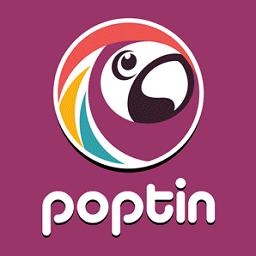
Tomer: Thanks! Macaws are very smart, and they mimic your behavior which reminds us of popups that track the visitor’s behavior and “pop” up accordingly. Also, parrots are colorful, have happy associations and very relatable.
Cloudways: You are an active member of the Facebook group, SaaS Growth Hacks (SGH). What do you look to achieve with active participation in this group? Also, your Facebook Community SaaS Products & Marketing is already 6,757 members strong. What are your goals for this community?
Tomer: SGH is a great community. Gal and I already have a lot of friends and partnerships from it. We learned from members’ questions and also answered and helped others where we could.
Our goal with Saas Products & Marketing is to have a place where founders can share their challenges, launch their product, ask for feedback, and help each other.
We passed 7K members, but the number doesn’t really matter. What matters is the quality of the group and its content. All the members are founders and marketers from different levels that work with or for a SaaS company.
Cloudways: Do you read often? What books do you recommend to the founders?
Tomer: It depends on the stage you’re at. For beginners or those who are just on the initial stage and stepping in the business world, I’d say “Rich Dad Poor Dad” is a must.
For founders who have seen things, I’d recommend “The Hard Thing About Hard Things” by Ben Horowitz. It showed me more challenges and difficulties of the entrepreneurial life. If you are looking for a product-oriented book, I’d say “Hooked” by Nir Eyal. For experienced founders, I’d say “Buy Then Build” by Walker Deibel.
The more products you buy, the better you understand that acquisitions will push you faster towards your goals rather than building products from scratch.
I recommend listening to podcasts, though, even more than reading books. Podcasts tend to be more value-focused, and you can learn more in a shorter amount of time. You can do it on your way to work, at the gym, while you eat lunch and can easily make it a habit.
Cloudways: Name five people who inspired you to be who you are today?
Tomer: My partner, my wife, and my parents inspired me the most. I always learn and get inspired by any founder or a CEO who has built great things, but there is no specific person. You can learn and get inspired by your friends, colleagues, competitors and even your kids.
Found Tomer Aharon interesting? Get to know about his future endeavors on LinkedIn



